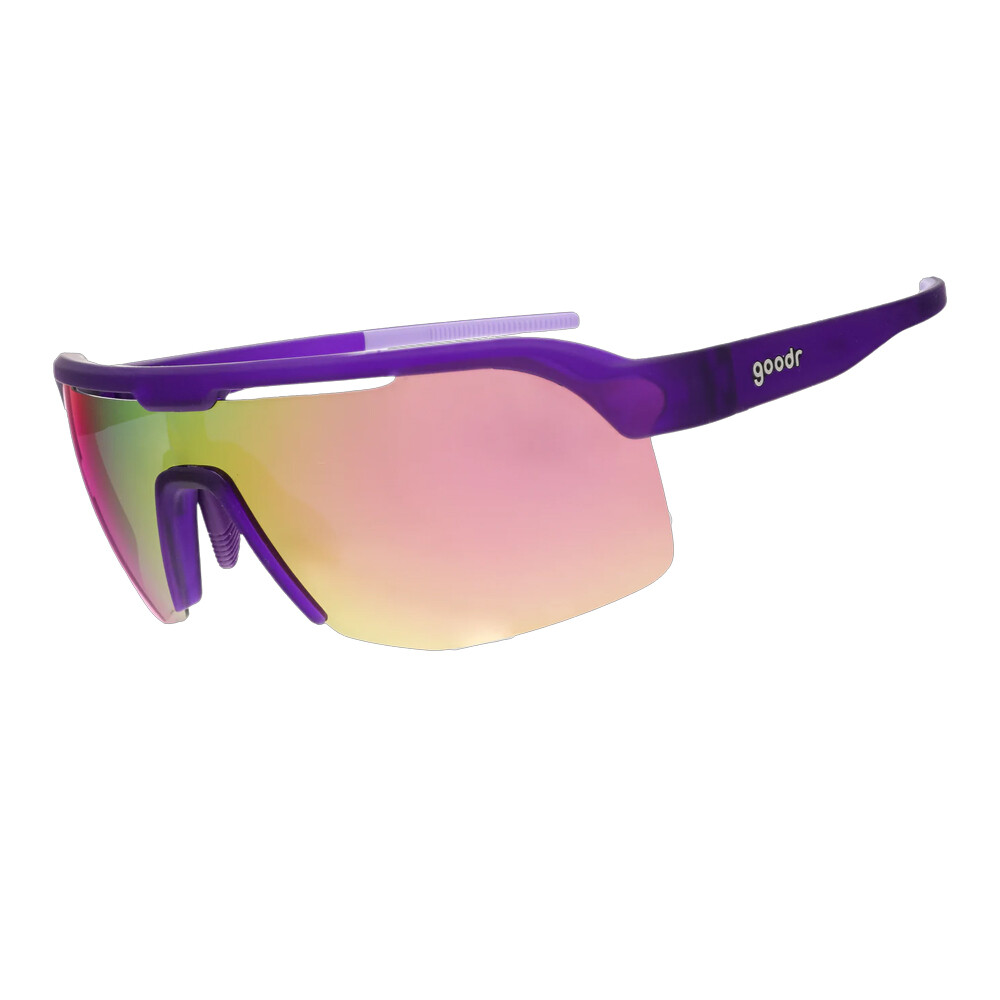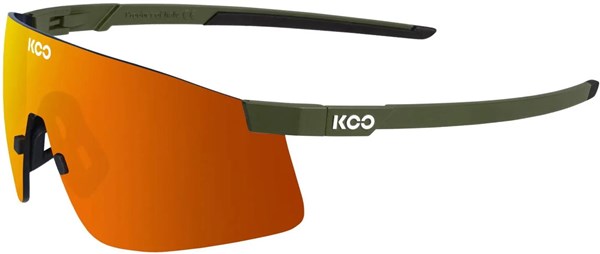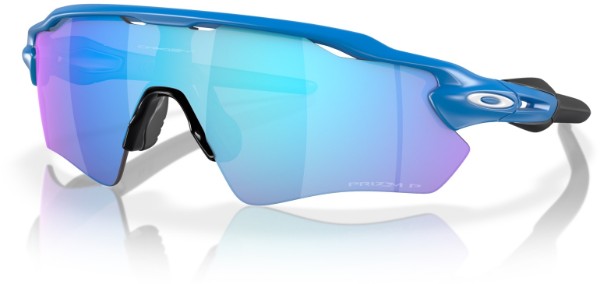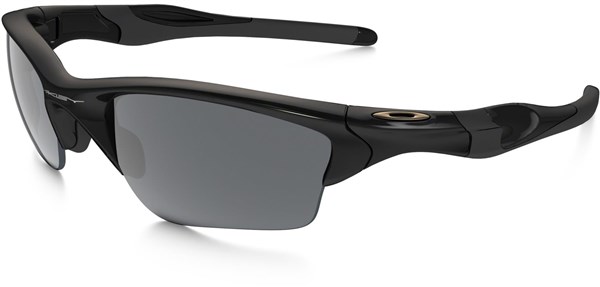Best running sunglasses to keep your eyes protected in 2025
As summer approaches, shielding your eyes is extremely important, so here's our list of 13 of the best running sunglasses on the market right now...

Running sunglasses are an utterly crucial tool for runs in all manner of light levels. A good pair can help you see better, worry less about dust or dirt and keep you from squinting or straining your eyes.
Quality sunglasses that are specifically designed for running are also tested for comfort, meaning they should stay glued to your face, allowing you to put in the hard work without worrying about slippage or bounce.
Below, we run through our top picks for you to consider. We’ve tried to pick a pair for every budget, as well as ensuring that all of the glasses claim to offer 100% UV protection.
Why you can trust 220 Triathlon
Our team of experts rigorously tests each product and provides honest, unbiased reviews to help you make informed decisions. For more details, see how we rate and test products.
Best running sunglasses at a glance
The Sungod Forty2s (buy) are lightweight, well-fitting and stylish sunglasses with nothing to obscure your vision.
The Tifosi Vogel SL (buy) offers great clarity in bright conditions, with a quality build and affordable price tag.
The Oakley Radar EV Path (buy) provides a good, comfortable fit with smaller lenses than average sports sunnies.
Best running sunglasses in 2025
Best running sunglasses overall

1. SunGod Forty2s
220 Triathlon Verdict
High cost and performance combine in these premium, performance sunnies. Score: 92%
Pros
- Wide coverage and unobscured sight
- Low weight
- Good fit
Cons
- No hardcase
| Price | $140 / £110 |
| Weight | 0.9oz / 26g |
| Visible light transmission | 11% |
| Special features | 8KO high-clarity lens, multiple nose bridges, 100% UV protection |
The SunGod Forty2s take their name form the number of kilometres in a marathon in an indication of their intended use.
Thanks to their wraparound, half-frame lens, the Forty2s’ field of vision and eye coverage are extensive. But it’s not so broad that I felt self-conscious wearing them.
The lens material itself is SunGod’s high clarity 8KO nylon which is claimed to be shatterproof. Tinted grey, the lens tones down glare without distorting what I looked at.
Very light at 28g, the SunGod Forty2s didn’t move around on my face as I ran. To perfect your fit, you have a choice of three nose bridges.
SunGod ships them in a cardboard box with a microfibre cloth bag recycled from plastic bottles.

2. SunGod Ultras
220 Triathlon verdict
A high price, but for that you get high-quality performance. Score: 85%
Pros
- Multiple nose bridges
- Brilliantly secure fit
Cons
- This lens choice is perhaps not best for bright, direct light
- Rather expensive
| Price | $230 / £190 |
| Weight | 0.9oz / 26g |
| Visible light transmission | 16-43% |
| Special features | Photochromatic lens, multiple nose bridges |
As the Ultras are designed especially for runners, the lens isn’t quite as ‘oversized’ as some others on the market that also target other sports.
Despite that, I found the size and shape more than adequate to offer decent coverage against wind, bugs and sunshine.
These sunglasses are available with multiple different lenses, but I opted for the 8KO Iris Smoke, a photochromatic option slated to adjust its tint to light conditions.
The lens looks see-through, but it promises a VLT (visible light transmission, ie how much light it lets through the lens to your eyes) of between 16-43%.
In testing, it offered adequate protection in most conditions, though with bright, direct light ahead of me I did find myself squinting slightly. In all other conditions, clarity and protection are excellent.
Fit was also exceptional, feeling secure throughout run testing (and even a few rides, too), while there are four nose bridges to choose from for an optimum fit.

3. Smith Motive
220 Triathlon verdict
Great, versatile pair of high-end sunglasses for triathlon that can be worn year-round. Score : 87%
Pros
- Visually stunning sunnies
- Good clarity and protection
- Nice level of wind coverage
Cons
- High tint not for dark conditions
- Nose piece issues
| Price | $219 / £179.99 |
| Lens | ChromaPop, interchangeable |
| Style | Aviator, wraparound |
| Case | Hard and soft case included |
The Smith Motive sunglasses impress on the run with great clarity, solid wind protection, and a secure fit. The ChromaPop lenses enhance colour and detail in bright light, though the 12% tint makes shaded paths harder to read.
They stay put while running, but the nose piece may sit too close for some, causing lens smudging from eyebrow contact. That said, a quick adjustment can help, though it may reduce wind coverage.
Stylish enough for casual wear, they’re a versatile option. At $219/£178, they’re pricey but come with a hard case and spare lenses.

4. Goodr Bolt G
220 Triathlon Verdict
Funky sports glasses at a good price point – worth a punt for style on a budget. Score: 83%
Pros
- Stylish design with functional sports appeal
- No slip, no bounce fit with adjustable nose piece
- Scratch-resistant and anti-glare
Cons
- Slightly tight behind the ears
- Visible top frame and nose piece (though not annoying)
| Price | $35 / £40 |
| Visible light transmission | UV400 protection, blocks 100% rays |
| Special features | Half frame, polarised and mirrored |
Several pairs of Goodr sunnies have made their way through my hands since they launched a few years back with their collection of whimsically-named, brightly-coloured sports glasses.
Case in point? These sports ones are named “Tentacle Tag Champion” (three other colourways are available if the pink and purple isn’t for you!).
A smaller design than the brand’s larger sports sunnies, I really liked how the Bolt G looked and felt. They hit that sweet spot between being a style designed for functionality in sports, but without making me look like I took a wrong turn looking for a peloton when I’m out riding or running.
It is nice to have the open frames for visibility and although the top frame and purple nosepiece were visible when on the face, it wasn’t an annoyance.
Goodr claim a ‘no slip, no bounce’ pledge on their sunnies and that was true in testing. The wrap-around design sat snugly on the face with slight compression behind the ears (a little less may have been preferable, for me) and grippy pads on the inside of the arms.
The inner nose piece is wired too and can be moved to get the perfect fit. The mirrored and polarised lenses did a nice job of cutting glare while keeping colours true.
Previously I’ve found the coating on the lenses scratched easily, but Goodr tell us these lenses are scratch-resistant and shatterproof with a scratch and saltwater-resistant coating and in testing, I didn’t experience any problems.

5. Goodr OG
220 Triathlon Verdict
Good value sunglasses with everyday styling and polarised lens. Score: 80%
Pros
- Versatile styling
- Polarised lens at bargain price
- Secure fit
- Good lens contrast and clarity
Cons
- No hard case
- Better long-distance options exist
| Price: | $25 / £30 |
| Sizes: | One size, designed for medium heads |
| Hard case? | No |
| Lens: | Amber polarised, UV400 protection blocks 100% of UVA and UVB rays |
The Goodr OG sunglasses offer a cheerful yet understated style with a tortoiseshell frame and brown lenses. This $25 / £30 pair comes with a soft case, providing good value.
Comfortable and stable during runs, they stay put no matter how much you sweat. The polarised amber “Bosley’s Basset Hound Dreams” lenses enhance contrast and clarity, particularly in varied light conditions like dappled woods, which is a significant benefit for the price.
While previous mirrored versions were prone to lens damage, the Goodr OG are a solid choice for those seeking versatile, budget-friendly sunglasses. The styling doesn’t scream ‘performance’, so it suits both everyday wear and running.

6. Oakley BiSphaera
220 Triathlon verdict
High quality sunnies with impressive performance. Quite pricey for single-sport use, and no hard case. Score: 77%
Pros
- High performance Prism lenses
- Secure and comfortable
Cons
- Lack of adjustability
- Single sport use only
| Price: | $202 / £168 |
| Sizes: | One size fits all |
| Hard case? | No |
| Lens: | Prizm Black lenses |
The BiSphaera employs a twin-lens design with a shorter profile than others on the market, making them suitable for use during sport and daily life, as well as for those with smaller faces.
That being said, these sunnies sit assuredly in the high-performance category when it comes to running. The dark Prizm Black lens offers high protection in strong sunlight where it boosts contrasts and highlights details on the road.
That being said, they’re not a pair for overcast runs. The BiSphaera also lack that wraparound coverage and wider field of vision of other eyewear on test, making them best suited to running over cycling.
Read my full review of the Oakley BiSpharea here.
Best value running sunglasses

7. Tifosi Vogel SL
220 Triathlon verdict
Packs a punch for your money. High quality and good vision in bright conditions.
Pros
- Brilliant value
- Clarity and contrast when sunny
Cons
- Coverage not 100%
| Price: | $39.95 / £55 |
| Sizes: | One size fits all |
| Hard case? | Yes, and soft |
| Lens: | One large polycarbonate shield lens, tinted or mirror options |
Tifosi’s Vogel SL offers impressive value at $40/£55, making it a strong contender in this test for affordability. The frameless design is sleek and provides a mostly clear field of vision.
The smoke lens performs well in bright sunlight but feels somewhat too dark in overcast or shaded conditions. Contrast is good, enhancing vision to highlight ground features while running.
The smaller lens size allows some wind to sneak through when cycling, making this pair the most suited for running. The Vogel feels secure and comfortable to wear. However, they don’t come with a case.

8. Koo Nova
220 Triathlon verdict
Stylish and great lens, but for this price we want perfection. Score: 80%
Pros
- Incredibly lightweight
- Lens offers great coverage
Cons
- Little loose on the nose
- No hard case
| Price | $200 / £190 |
| Weight | 0.7oz/21g |
| Visible light transmission | 11.5-73% |
| Special features | Super lightweight, photochromatic lenses, hydrophobic coating |
Like the SunGod Ultras, the Novas have been designed for trail runners but they coped very well across both cycling and running.
The lens offers more than adequate coverage, keeping any wind and dust at bay.
Clarity is also good, and the photochromatic tech allows you to wear them in a range of lighting conditions, though regular tinted competitors here fare a little better in bright, direct sunshine.
While comfortable, I found the fit around the nose to be looser than I’d like, even after switching nose pieces. Of course, fit is subjective.
I also found the arms to be rather long, so they clashed with one of my helmets, but this will likely depend on what helmet you wear.
I’m a fan of the style, but would love a hard case to be included, too.
Best running sunglasses with smaller lenses

8. Oakley Radar EV Path
220 Triathlon verdict
Fit well and lenses deliver a great viewing experience. Score: 84%
Pros
- Incredibly comfortable
- Lens delivers brilliant clarity
Cons
- High price
- Sun can sneak through vents
| Price | $221 / £191 |
| Weight | 1oz/28g |
| Visible light transmission | 12% |
| Special features | Prizm lenses boost clarity, Unobtainium earsocks |
We live at a time when oversized lenses are more and more common in running sunglasses, but there still is a place for smaller optics, particularly if larger options don’t suit your face shape.
The Radar EV Path sunglasses fall into the latter category and, despite being using a slimmed down lens, there’s decent coverage while running.
Vents at the top help fend off any fogging, while the Prizm Sapphire lens featured here helped create a more vibrant picture and made details on the road or trail a little easier to pick out in a hurry.
The category three lens has 12% VLT (visible light transmission), which means it dealt with bright light well, but things can get a bit dark when you run on a cloudy day or venture through woodland.
Fit is another high point. I noticed zero movement during test runs, with the rubber-feeling arm grips keeping the sunglasses in place well.
It’s comfortable, too, while you get two nose pieces to choose from to ensure you achieve a good fit.
There are a couple of minor negatives, though. For one, that is a very steep price. Secondly, on occasion I found the sun would squeeze through the vents at the top of the lens and into my eyes.
See our full Oakley Radar EV Path review for more.

9. Goodr Astro G
220 Triathlon Verdict
Big, bold sunnies for summer adventures. Best suited to larger faces. Score: 85%
Pros
- Lightweight and bounce-free
- Polarised lens for bright conditions
Cons
- Frames best suited to larger faces
| Price | $35 / £40 |
| Visible light transmission | not mentioned |
| Special features | Gradient lens, frameless top, for larger faces |
Goodr’s Astro G are bold, budget-friendly sunnies made for bigger heads. They felt oversized on my face, unlike the sleeker Bolt G, and I was self-conscious wearing them on runs.
That said, they’re lightweight, grippy, and didn’t budge even on long, sweaty outings. The polarised, UV400 lenses offer a graduated tint that handles bright conditions well.
If you like a wide fit and quirky style—this pair is called Kidnapped By A Cyborg—they’re great value. I’d opt for the mirrored lens version next time, but runners who prefer bigger frames will find solid performance for the price.
Also consider…

10. Oakley Hydra
| Price | $184 / £154 |
| Weight | 3.2oz/90g |
| Visible light transmission | 12% (Prizm Sapphire lens) |
| Special features | Bio-matter frame, Prizm lens technology |
Industry giant Oakley are no strangers to the world of running glasses. One of the brand’s lines, the Hydra, pays homage to ’90s surf style, harking back to the classic Oakley Razor Blade.
The Hydra features a semi-rimless frame and various neon colour options, a design which probably wouldn’t look out of place on a young Dennis Rodman or Gwen Stefani. There’s also a nod to the brand’s heritage with the Oakley B1B logo at the temples, which fronted the brand from 1975-1993.
In terms of tech, the Hydra is also said to feature a 56% plant-based frame, as well as Oakley’s Prizm lens, designed to enhance colour, contrast and detail, which has earned rave reviews on these pages before.

11. Bollé Bolt 2.0
| Price | $220 / £190 |
| Weight | 28g |
| Visible light transmission | 13-29% (depending on lens choice) |
| Special features | Polarised, Thermogrip, Volt + |
Bollé says the Bolt 2.0 sunglasses utilise the first sunglasses lens designed by AI, with the latter used to test a series of lens combinations.
Reportedly, this allowed for a 30% improvement to the colour enhancement and improved depth perception based on previous models, a feature Bollé calls ‘Volt +’.Special features However, you’ll need to pay a little extra to get this enhancement.
The Bolt 2.0s also feature Bollé’s ‘thermogrip’, a type of rubber grip that the brand says is engineered to become grippier when in contact with water or sweat. The grips run at touch points across the temples, ears and nosepieces.

12. Sunwise Evenlode
| Price | £39.99 (UK only) |
| Weight | 40g |
| Visible light transmission | Variable (category 0-3) |
| Special features | Interchangeable lenses with three options included |
Sunwise’s Evenlode sunglasses are a budget option that aim to be useful for a variety of weather conditions. The glasses come with three interchangeable lenses: clear, for no light protection; yellow, for low light; and smoke mirror, for strong light.
They’re said to be impact resistant and feature a high optical clarity, with a wraparound style designed to keep them secure while on the move.
The glasses also feature rubber nose pads and ear rests, which are said to offer improved comfort, as well as flat arms to fit under a running cap or hat.

13. Oakley Half Jacket 2.0
| Price | $212 / £176 |
| Weight | 21g |
| Visible light transmission | 11% |
| Special features | Polarised, interchangeable lenses |
Another option from Oakley, the Half Jacket 2.0 features a more classic, inconspicuous design.
They feature Oakley’s impact protection lenses, which are also said to be removable, allowing you to switch to a different lens if the weather or terrain demands it.
They’re also available with polarised lenses or a prescription, while padded earsocks and nosepads aim to improve comfort throughout your run.
How we tested running sunglasses
All of the running sunglasses featured here have been tested by 220‘s expert gear reviewers, which includes former content editor Rob Slade, who has years of experience testing triathlon kit.
When judging the best running sunglasses, we considered fit, comfort, performance in bright conditions, versatility in different lighting, field of vision, clarity and contrast, value for money, protection against wind and debris, and anti-fog properties.
When it comes to rating, anything with a score of 90% or more indicates an impressive piece of kit that would be pretty hard to beat. Gear scoring 80-89% is still impressive and some of the best on the market, but not quite touching the front runners.
A scoring of 70-79% means it’s s product worth taking into account, since it fills the brief well, but it’ll have a couple of flaws. Anything scoring under 70% has a few more major issues, or several smaller ones, so we’d recommend to consider if these are deal breakers before purchasing.
For more details, see how we rate and test products.
Which features to look for in running sunglasses

UV protection
Ensure your chosen running sunglasses provide 100% UV protection to shield your eyes from harmful ultraviolet rays.
UV categories range from 1-4: with category 2 mainly aiming to blocking glare on overcast days, category 3 being the most common to protect the eyes on bright days, and category 4 sporting a dark lens for extreme sunshine or brightness.
Lens material
Look for lenses made of polycarbonate or another durable material that’s shatterproof and impact resistant.
Many lenses these days also come with scratch resistance and are super lightweight.
Lens style
Most sports sunglasses aim to provide as much coverage as possible, which is why you’ll often see runners wearing futuristic-looking, oversized sunnies.
This is to offer as much protection as possible from the sun’s glare and to prevent wind and airborne debris from reaching the eyes.
If you’re looking to also wear your running sunglasses for cycling, be sure to aim for ones with a large field of vision and high coverage for these reasons.
Lens technology
More expensive lenses may be polarized to reduce glare or photochromatic / photochromic to change their tint according to light levels, or incorporate clarity-boosting technology like Smith Optics’ ChromaPop.
While these features are nice to have because they reduce eye fatigue and help you see more clearly, they can add hundreds of dollars or pounds on to the cost of already expensive sunnies.
Fit and comfort
Measure your face’s dimensions and ensure you’re choosing glasses that fit securely and comfortably on your face without slipping or becoming uncomfortable.
If you have a smaller face, consider glasses with a smaller lens to ensure they fit securely.
Many sunglass brands will provide either several nose bridge options and an adjustable nose pad to avoid any unwanted pressure or red marks.
Ventilation
It’s a good idea to find running sunglasses with proper ventilation to prevent fogging. Look for vents that sit along the top of the sunglasses, and an anti-fog coating to help to avoid this.
Visible light transmission (VLT)
Check the VLT percentage, as this figure refers to the amount of light that can pass through the lenses of sunglasses.
The percentage can vary between 80-100%, for indoor use or cloudy days, 12-43% for glare reduction in stronger sunlight; or under 8%, for extreme conditions.
For running, anywhere between 8-42% is a good benchmark, but it’s worth considering your specific needs and the weather you’re likely to be running in.
How to clean your sunglasses without damaging them
With regular training use, running sunglass lenses quickly collect sweat and grime, so proper cleaning is key. Rinse under warm water, lather gently (using fingers or soft cloth) with mild washing-up liquid (especially around nose pads and grippers), then rinse again.
Use distilled water if possible to avoid streaks. Blow-dry on a cool setting and finish with a microfiber cloth—never paper towels or cotton!
For fog-free lenses, gently buff with shaving foam. Want more detail – check out our breakdown of how to clean your sunglasses by expert tester James Witts.
What are the differences between running and cycling sunglasses?

Running sunglasses need to stay securely in place while you run at speed and on bumpy trails so their designers favour a close, snug fit. To achieve this, they rarely use the wraparound lens design common on cycling sunglasses to give a wider peripheral vision and better protection form higher wind / debris speeds.
Some cycling sunglasses are designed to aerodynamically complement the shape of the brand’s helmet. This is another reason they often have a wider, full-face lens in a frameless design.
The arms of cycling sunglasses can sometimes be more flexible than of running sunglasses so they can slot into a bike helmet’s vents to be carried when not in use.
Running sunglasses are more likely to have have adjustable nose pads and temple tips for added security.
While ventilation is important for both cycling and running sunglasses, the risk of fogging up is higher in dry conditions with the latter. This is because at slower running speeds there is less onrushing wind to dissipate the condensation. Therefore, running sunglasses tend to have more vents.
As a triathlete, you don’t necessarily need to have separate sunglasses for running and cycling. The best sunglasses for triathlon are versatile enough for both sports.





















